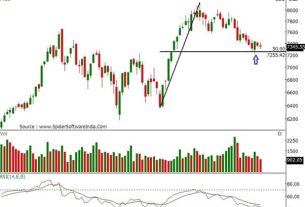
Is buying low & selling high an apt strategy? Let’s find out.
The most common thought a trader entering the markets has is, that one needs to identify stocks trading lower, buy it and sell it when it moves up. Though it looks extremely easy and convenient in a theoretical world; that is not the reality.
Before we dive in, let us get the terminology right. With buying low, I mean stocks in a downtrend or under-performing and expectation to sell it on an expected reversal. The timeframe expectations are short term and mostly for day trades.
A new trader or even traders who are experienced in the game, do keep trying to earn from this strategy of buying low and selling high. There may obviously be some exceptions to few of them making money from this, but a practical outcome is not generally favourable.
Traders often make the mistake of buying under-performers which continue to under-perform despite the overall market doing well, leading to loss of opportunity or even absolute losses.
What does the stats say?
A common human behaviour is, that one expects to buy at the lowest price possible and in that hunt, tends to participate in stocks which are adversely moving. Now let us ask ourselves, how many percentages of times will a reversal/pullback happen? Look at any trending charts of any instrument, the reversals or pullbacks will occur to average around 20 percent of the times. So, trading a reversal naturally has a strike rate of only approx. 20 percent. Now, even if you get it right, how big are the pullbacks compared to trends.
Generally, it does not exceed 50 percent move of the trend. So, participating on adverse moves are statistically not favourable with low strike rate and smaller payoffs.
Why do these stocks not reverse?
For a reversal to happen any instrument will need a shift in the demand and supply. For the demand to outgrow the supply, instruments need to attract a huge buying interest. Any instrument which has not delivered positive returns, does not attract enough participation to lead to this reversal.
Relative performance
In many cases, the underperforming stocks may also be a victim for short legs on a pair trade or a short stock in large, long/short portfolios. Even though the stock might not be expected to go down in absolute terms, it might still have an expectation to underperform another stock from probably the same sector or against the Index.
These trends, keeps the underperforming stocks beaten and outperformers to perform more. Shorting a few stocks in a basket also has risk diversification benefits in few basket trading portfolios. So, the summary is that, yet the stock might be good standalone but may not be a relatively feasible hence, continues to underperform.
Traders’ 2 percent rule
So here comes the question, if not buy low then what to trade. A winning idea that worked for me is Buy High Sell Higher. If you are an intraday trader, a 2 percent rule could help you achieve this.
Most of the stocks in a normal market range between +-2 percent and anything that moves out of this barrier generally is ready for a trend. A move of about 2 percent leads to winding up of immediate trades and this proves control of the buyer or seller.
Once the control is proven, it just makes sense to participate with the trend which in a general case will have a higher strike rate than reversals.
Summary
Minor changes in trading behaviour can sync your trades with the market trends. Buying low selling high might sound good in theory but in a real world of trading, buying high selling higher could be a more practical strategy.
Disclaimer: The views and investment tips expressed by experts on Moneycontrol.com are their own and not those of the website or its management. Moneycontrol.com advises users to check with certified experts before taking any investment decisions.

